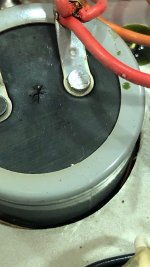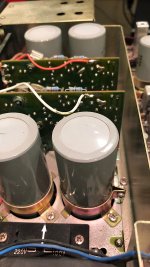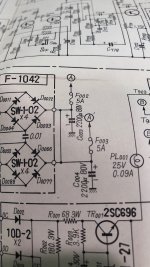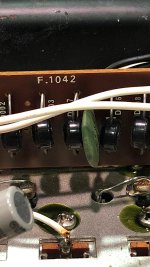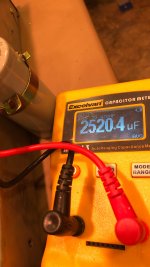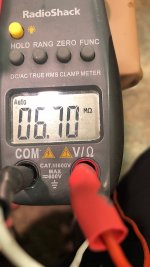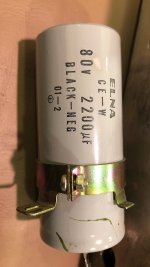Solder joints in equipment this old can go "cold" due to airborne contaminants and moisture any of these that does not have a shiny appearance would be suspect.
I repaired a 30 years old Kenwood amplifier for my brother a few years ago. This was mostly a job of removing solder and remaking the joints although there was a persistent problem due to one of the control pots which needed a spray. This one used an electronic delay to avoid popping noise at power up. There was a fault in this area and resulting in a loud mains frequency hum in the speakers for a second or two before settling to normal.
Solder joints in equipment this old can go "cold" due to airborne contaminants and moisture any of these that does not have a shiny appearance would be suspect.
I repaired a 30 years old Kenwood amplifier for my brother a few years ago. This was mostly a job of removing solder and remaking the joints although there was a persistent problem due to one of the control pots which needed a spray. This one used an electronic delay to avoid popping noise at power up. There was a fault in this area and resulting in a loud mains frequency hum in the speakers for a second or two before settling to normal.
This one has no relay. Haven’t found cold if cracked joints by visually inspecting every board. Much of it point to point job.
Can you read the uF and VDC values on those four large capacitors?
They may be different from each other.
They may be different from each other.
One of lower capacitors has a hole.View attachment 876613
That capacitor has vented and this and it's partner should be replaced I suspect failure of one the diodes in your bridge rectifier. I am assuming the transformer mains voltage setting switch is in the correct position for country.
If the fault emerged when you switched the amplifier on there would have some accompanying noise and odour.
Last edited:
All 4 80 v 2200uF
What are the diameters? Also post close up photos of the top side.
They seem to be in clamps, so we must match the diameters for them to fit.
I think it is not likely that a rectifier has failed, but those will be checked also
after deciding about the capacitors. We cannot do everything at the same time
without undue confusion.
Last edited:
Diameter 35 mm. About 70 mm tall. View attachment 876622
Yes, they are in clamps, so the replacements should be 35mm diameter also.
Newer ones will be smaller for the same CV product, so we must choose the
replacements carefully.
View attachment 876645
Could it be that capacitors has been replaced? What 01-2 marking means?
Date code 2001, February production. The originals probably were replaced around then, and were 35 years old.
If one is bad, they all have to go, so don't bother with any more testing on those 4 big ones.
Last edited:
So far this one from Digikey looks reasonable for the four main capacitors.
Two are in the power supply, and two are the output coupling capacitors.
These are 35mm in diameter, but are only 32mm long. They have 2.2A ripple current rating.
They are snap-in types, but you can solder wires to the terminals instead.
Blocked
Two are in the power supply, and two are the output coupling capacitors.
These are 35mm in diameter, but are only 32mm long. They have 2.2A ripple current rating.
They are snap-in types, but you can solder wires to the terminals instead.
Blocked
Last edited:
Thank you for your help so far. Much much appreciated. I’ll replace all 4 and go from there.
Interestingly all 4 shows 2300-2500uF even one with a hole at the bottom. All rectifier diodes shows 1.3-1.8 mega ohm. Both ways. Doesn’t seem to be shorted?
Interestingly all 4 shows 2300-2500uF even one with a hole at the bottom. All rectifier diodes shows 1.3-1.8 mega ohm. Both ways. Doesn’t seem to be shorted?
Right, does your meter have a diode test function? It's labeled with a diode (of course).
With the red lead on the anode, you should get a few hundred ohms for each diode.
With the red lead on the anode, you should get a few hundred ohms for each diode.
Last edited:
- Home
- Amplifiers
- Solid State
- amplifier output weak and distorted.
